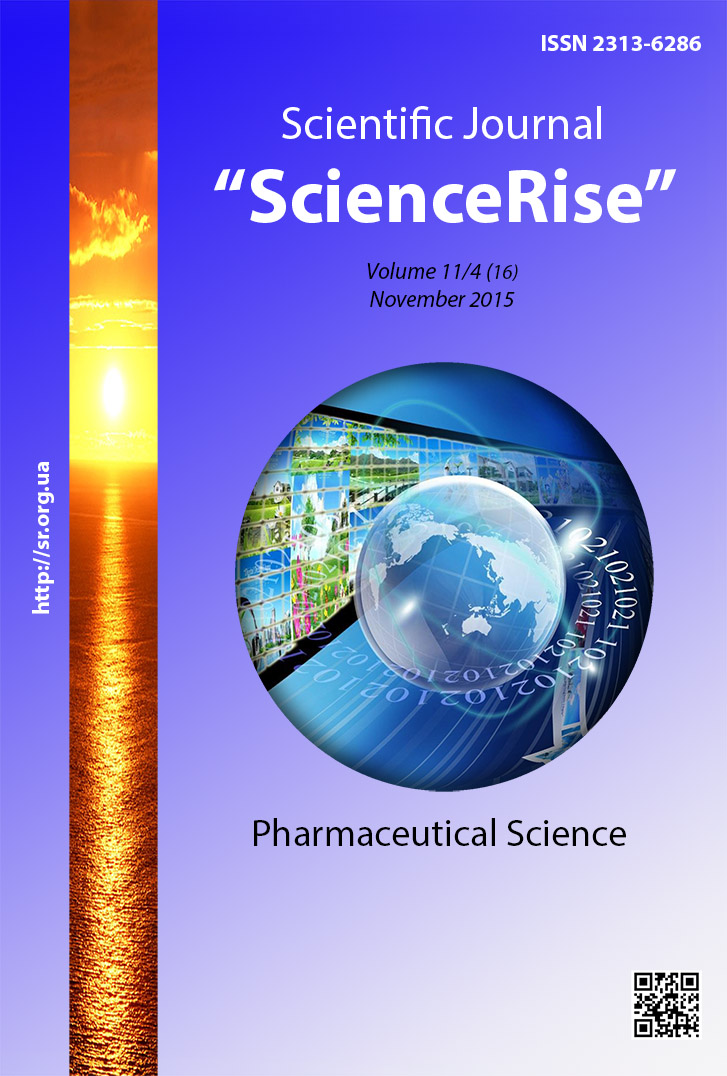Перспектива використання полімерів, як допоміжних речовин у виробництві твердих лікарських форм
DOI:
https://doi.org/10.15587/2313-8416.2015.54891Ключові слова:
технологія, тверді лікарські форми, таблетки, допоміжні речовини, полімери, фізико-хімічні властивості, застосуванняАнотація
Резюме. Раціональній, науково обґрунтований підбір допоміжних речовин має суттєве значення для підвищення конкурентоспроможності лікарських препаратів на ринку. Допоміжні речовини значно впливають на біодоступність активних фармацевтичних інгредієнтів та сприяють прояву фармакологічної активності. Останнім часом при розробці та вдосконаленні технології твердих лікарських форм провідну роль відіграють високомолекулярні сполуки, що дозволяють створювати лікарські препарати з прогнозованими біофармацевтичними і технологічними параметрами. Широкий спектр нових полімерів дозволяє створювати оптимальні умови для реалізації активності лікарських речовин різної хімічної структури та напрямків дії. Використання нових універсальних високомолекулярних, багатофункціональних речовин, створює передумови для оптимізації технологічного процесу.
Мета. Визначити сучасні полімерні речовини, що використовуються в фармації, їх фізико-хімічні властивості, область застосування.
Висновки. Таким чином, розширення асортименту допоміжних речовин за рахунок нового покоління високомолекулярних сполук створює нові можливості для вдосконалення процесу таблетування та отримання препаратів належної якості
Посилання
Duncan, R., Spreafico, F. (1994). Polymer Conjugates. Clinical Pharmacokinetics, 27 (4), 290–306. doi: 10.2165/00003088-199427040-00004
Alekseev, K. V., Kedik, S. A., Blynskayaetal, E. V. (2011). PharmaceuticalTechnology. Soliddosageforms. Moscow: PublishingHouse ZAO IPT., 662.
Conti, B., Pavanetto, F., Genta, I. (1991). Use of polylactic acid for the preparation of microparticulate drug delivery systems. Journal of Microencapsulation, 9 (2), 153–166. doi: 10.3109/02652049109021231
Ali, S. A. M., Doherty, P. J., Williams, D. F. (1994). Molecular biointeractions of biomedical polymers with extracellular exudate and inflammatory cells and their effects on the biocompatibility, in vivo. Biomaterials, 15 (10), 779–785. doi: 10.1016/0142-9612(94)90032-9
Chu, C. C. (1981). Thein-vitro degradation of poly(glycolic acid) sutures ? effect of pH. Journal of Biomedical Materials Research, 15 (6), 795–804. doi: 10.1002/jbm.820150604
Li, S. (1999). Hydrolytic degradation characteristic sofaliphatic polyesters derived from lactic and glycolic acids. Journal of Biomedical Materials Research, 48 (3), 342–353. doi: 10.1002/(sici)1097-4636(1999)48:3<342::aid-jbm20>3.0.co;2-7
Bastoli, C. (Ed.) (2005). Hand book of Biodegradable Polymers. Shawbury: Rapra Technology Limited, 549.
Siepmann, J. (2001). Mathematical modeling of bioerodible, polymeric drug delivery systems. Advanced Drug Delivery Reviews, 48 (2-3), 229–247. doi: 10.1016/s0169-409x(01)00116-8
Gilding, D. K., Reed, A. M. (1979). Biodegradable polymers for use in surgery—polyglycolic/poly(actic acid) homo- and copolymers: 1. Polymer, 20 (12), 1459–1464. doi: 10.1016/0032-3861(79)90009-0
Gunatillake, P. A., Adhikari, R. (2003). Biodegradable synthetic polymers for tissue engineering. European Cellsand Materials, 20 (5), 1–16.
Schmitt, E. A., Flanagan, D. R., Linhardt, R. J. (1993). Degradation and release properties of pellets fabricated from three commercial poly(D,L-lactide-co-glycolide) biodegradable polymers. Journal of Pharmaceutical Sciences, 82 (3), 326–329. doi: 10.1002/jps.2600820322
Gad, S. C. (Ed.) (2008). Pharmaceutical Manufacturing Handbook: Productionand Processes. New Jersey: J. Wiley & Sons, 1370.
Garlotta, D. (2001). A literature review of poly (lactic acid). Journal of Polymers and the Environment, 9 (2), 63–84. doi: 10.1023/a:1020200822435
Alekseev, K. V., Gritskova, I. A., Kedik, S. A. (2011). Polymers for Pharmaceutical Technology. Moscow: Publishing House ZAO IPT., 511.
##submission.downloads##
Опубліковано
Номер
Розділ
Ліцензія
Авторське право (c) 2015 Інна В’ячеславівна Ковалевська, Олена Анатоліївна Рубан

Ця робота ліцензується відповідно до Creative Commons Attribution 4.0 International License.
Наше видання використовує положення про авторські права Creative Commons CC BY для журналів відкритого доступу.
Автори, які публікуються у цьому журналі, погоджуються з наступними умовами:
1. Автори залишають за собою право на авторство своєї роботи та передають журналу право першої публікації цієї роботи на умовах ліцензії Creative Commons CC BY, котра дозволяє іншим особам вільно розповсюджувати опубліковану роботу з обов'язковим посиланням на авторів оригінальної роботи та першу публікацію роботи у цьому журналі.
2. Автори мають право укладати самостійні додаткові угоди щодо неексклюзивного розповсюдження роботи у тому вигляді, в якому вона була опублікована цим журналом (наприклад, розміщувати роботу в електронному сховищі установи або публікувати у складі монографії), за умови збереження посилання на першу публікацію роботи у цьому журналі.

